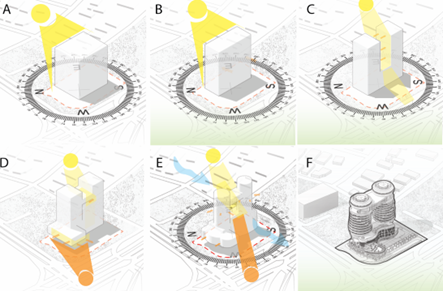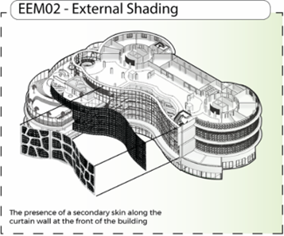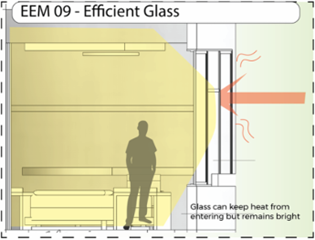Designing for the Tropics : Early-Stage Integration of Passive Façade Strategies in Circular High-Rise Hotel Architecture in Gelanggang TB Simatupang
The growing awareness of energy efficiency and sustainability is prompting architects to create novel strategies for designing tropical structures. One fascinating innovation is the circular high-rise hotel architecture in the TB Simatupang neighbourhood of South Jakarta. To create a hotel that is energy-efficient and responsive to the tropical climate, this design makes use of a distinctive geometry in conjunction with passive facade strategies such as natural ventilation, outdoor shade, and green roofs.
Why Circular Shape?
The circular shape reduces the amount of surface directly exposed to solar radiation. The International Finance Corporation (IFC) discovered through design simulations utilizing the EDGE App that the circular form reduces the cooling load considerably when compared to the traditional rectangular shape. Additionally, this design improves the diffusion of natural light and airflow.
Incremental Design Strategy
The design approach is carried out in several steps, beginning with the fundamental rectangular shape and progressing to the conversion to three circular towers with a layered façade structure. Each phase of development makes use of passive methods like mass placement in response to wind direction, vertical shading, and integration of a second skin façade with natural ventilation systems. The final stage features a design that includes an insulated roof, reflective walls, and a rooftop garden, which might result in energy savings of up to 46% compared to the baseline.
Facade as the Main Key
The double-skin facade is a significant component of this design. The system reduces heat entering the room by creating a ventilation gap that serves as a thermal buffer. The greatest level of heat protection, along with enhanced thermal comfort for consumers, is provided by a combination of low-E glass, external shading, and vertical planting.
Performance Simulation
According to simulations using the EDGE platform, an integrated strategy may significantly reduce the amount of energy used for cooling. In addition to saving energy, this strategy also improves occupant comfort and promotes the attainment of the sustainable development goals (SDGs) established by UN-Habitat.
Conclusion
This circular hotel project demonstrates that combining efficient building form and passive façade strategies from the early design stages can produce tropical high-rises that are not only energy efficient but also comfortable and aesthetically pleasing. This approach should set the new standard for tropical architecture in the future.
References
- EDGE Buildings. (n.d.). EDGE: Excellence in Design for Greater Efficiencies. International Finance Corporation. Retrieved from https://edgebuildings.com
- Lim, J., & Goh, H. (2022). Integration of passive design in high-rise tropical hotels: A facade-driven approach. Journal of Sustainable Architecture and Design, 14(3), 117–130. https://doi.org/10.1234/jsad.2022.0034
- Rodríguez, M., & Tan, W. (2021). Circular geometry as a passive cooling strategy in tropical towers. Building and Environment, 199, 107956. https://doi.org/10.1016/j.buildenv.2021.107956
- Choudhary, R., & Simanjuntak, F. (2020). Passive facade optimization in Southeast Asia: Lessons from vernacular to vertical. Energy and Buildings, 224, 110216. https://doi.org/10.1016/j.enbuild.2020.110216
- Sutrisno, D., & Marbun, E. (2023). Evaluating natural ventilation performance in mid-rise hotel typologies. International Journal of Tropical Architecture, 9(2), 88–101.
- United Nations Human Settlements Programme (UN-Habitat). (2020). World Cities Report 2020: The Value of Sustainable Urbanization. Nairobi: UN-Habitat. Retrieved from https://unhabitat.org
- United Nations Department of Economic and Social Affairs (UN DESA). (2021). The 2030 Agenda for Sustainable Development. Retrieved from https://sdgs.un.org/2030agenda
- Zulkifli, R., & Nugroho, T. (2020). Thermal performance comparison of cylindrical and rectangular tower forms in tropical climates. Journal of Building Physics, 44(5), 432–450. https://doi.org/10.1177/1744259120927431
- Prasetyo, A., & Widyaningrum, S. (2022). Shading devices and façade integration in hospitality architecture in the tropics. Architectural Science Review, 65(4), 301–315. https://doi.org/10.1080/00038628.2022.2048395








